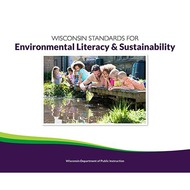(View Complete Item Description)
In this series of activities, students build their background knowledge about bats through a variety of media and texts (Activity 1), play games to learn more about how bats interact with their prey and how they use their bodies, and choose an action(s) to help make the world a better place for bats, and therefore, humans (Activity 2). My students decided to create educational posters convincing people to help bats, plant a bat garden, build a bat house, and adopt-a-bat. They also wrote persuasive letters to hang the bat house on our school, which they presented to the administration (and the project was approved - in addition to which the principal asked us to create additional educational materials to teach the school community - teachers, students, other staff - and families about the benefits of bats).
Material Type:
Unit of Study
Author:
Kristin Halverson











